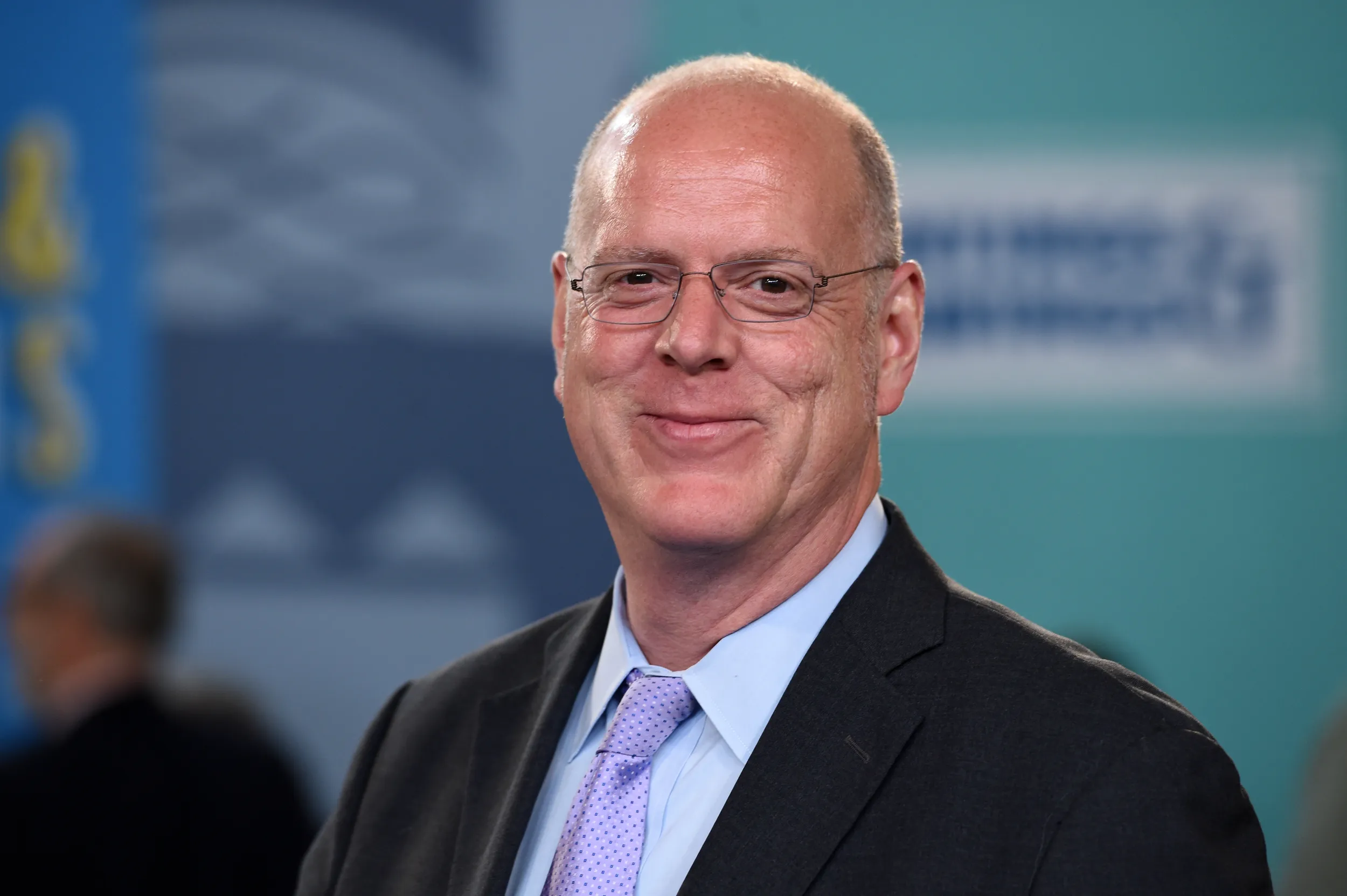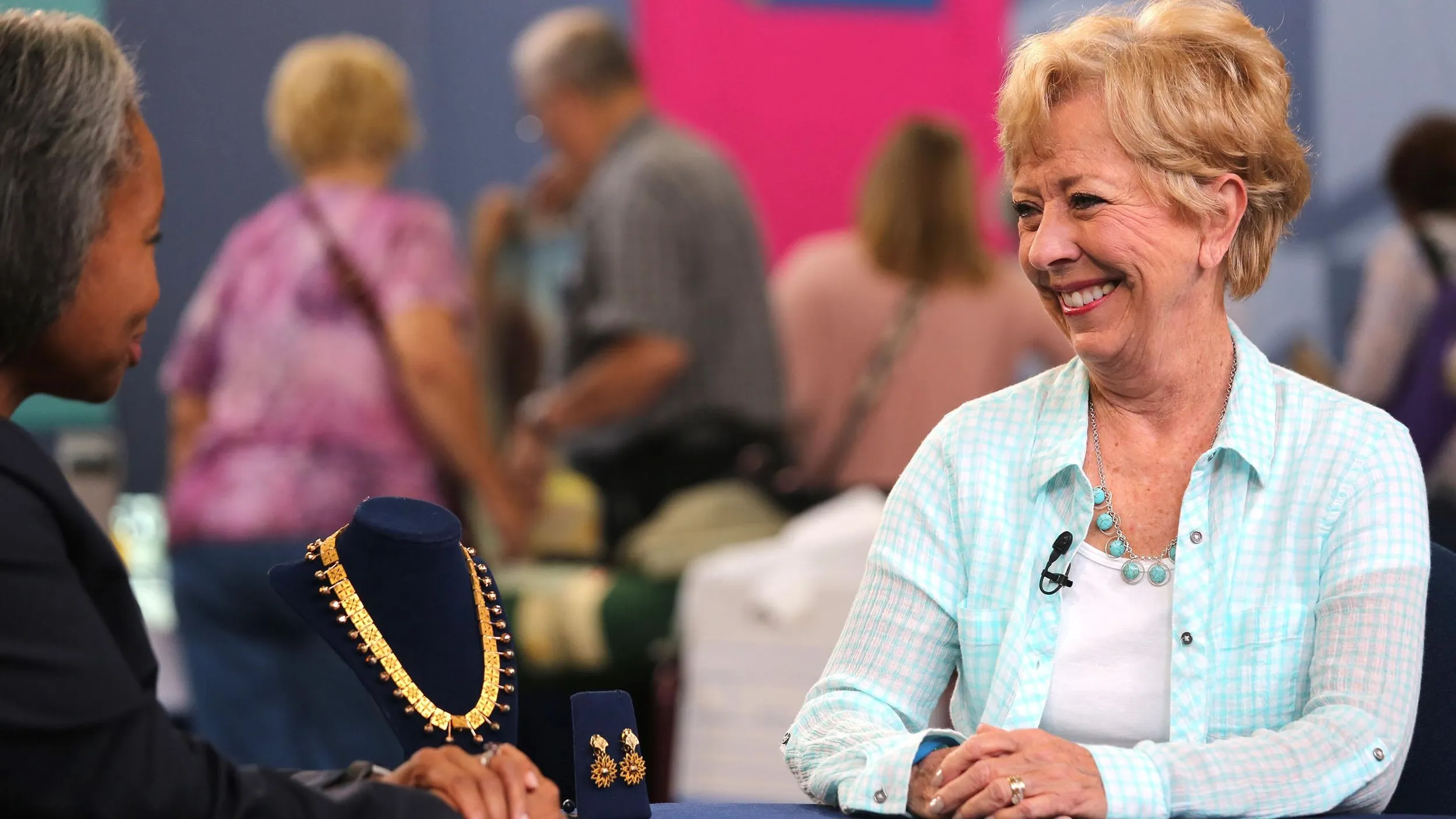GUEST: I brought this rug that was originally purchased by my grandmother in France. My mother was born and raised in France, in the Savoie region in the Alps, and my grandmother apparently purchased the rug at an estate sale of sorts, but apparently, at, like, a castle. And I don't believe she paid a lot of money for it.
APPRAISER: Do you have any idea about when your grandmother may have purchased it?
GUEST: I believe my mother said, possibly, in, like, the 1930s.
APPRAISER: And do you know anything about it? Have you ever done any research or have heard any stories of it?
GUEST: I believe that it's a Bokhara, as far as the design. The images in the rug, I understand, are some of the founders or leaders of the Communist Party, the old Russians, perhaps Lenin, few others. I've tried to research who it could be, and the dates don't always match up enough for me to be sure who's who.
APPRAISER: In general market terms, it's something that's referred to as a Bukhara. Bukhara is kind of a generic term for Turkmen rugs made in Central Asia, kind of in countries like Uzbekistan, Turkmenistan. Even what's today eastern Iran, northern Afghanistan. And they were deemed Bukharas because that was the city they were exported from from Central Asia into the West. As a rug person, I don't really like the term "Bukhara," I don't really use the term "Bukhara." I would just call it a generic Turkmen.
GUEST: Okay.
APPRAISER: And to be honest with you, the rug itself is a very generic Turkmen rug from the 1920s, 1930s. At this time, the Turkmen were no longer nomadic people. By this point, they are fairly settled, making rugs commercially, fairly low-quality wool, low-quality dye stuffs. And there's literally thousands and thousands, if not hundreds of thousands of similar Bukharas around.
GUEST: Okay.
APPRAISER: What makes this distinct, however, are the figures.
GUEST: Yes.
APPRAISER: The-- The portraits that you see here… and then here again in the center, and then two very stylized portraits here.
GUEST: Yeah.
APPRAISER: I would agree with the supposition that they're Communist figures. Particularly this central figure here, and even this figure…
GUEST: Mh-mmm.
APPRAISER: …really look like a highly stylized version of Lenin…
GUEST: Yes, yes.
APPRAISER: …leader of the Soviet revolution. In the 30, 35 years I've been doing rugs, I've seen lots of Bukharas. I have never seen one with any sort of pictorial representation other than animals. When the Soviet Union kind of took over the Turkmenistan regions…
GUEST: Mh-mmm.
APPRAISER: …there was huge resistance from the Turkmen people. They fought, they rebelled.
GUEST: Oh.
APPRAISER: And it really wasn't till the 1930s that the Turkmen government that had been installed by the Soviets kind of came to prop up Soviet ambitions in the Turkmenistan regions.
GUEST: Hmm.
APPRAISER: It's a real expression of the weaver herself. This is a woman who is working outside of what she was supposed to be doing, and was adopting these images she probably saw from prints, from propaganda posters, and incorporating them into her weaving. Historically, that was a tradition amongst Turkmen weavers, that they got inspired by what was surrounding them. From a value viewpoint, you take away these figures, this rug's worth maybe $200, $300. With the figures, at auction, I would place an estimate of $1,500 to $2,500 on it.
GUEST: Okay.
APPRAISER: Just out of a curiosity.
GUEST: Okay.
APPRAISER: I'm not sure if there's a great market for Communist-related items...
GUEST: Right.
APPRAISER: ...particularly in the United States.
GUEST: Right.
APPRAISER: So that may add value, but to a rug person, just the fact that they're there at all, that it's very unusual, is going to really significantly increase the value...
GUEST: Right.
APPRAISER: ...of what it would be without them.
GUEST: Right.









